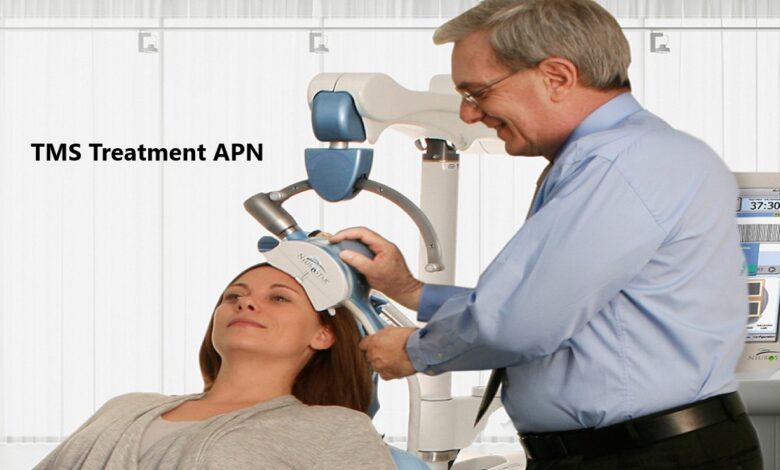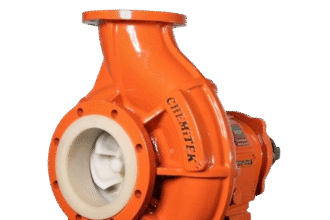Mental health care is evolving, and TMS treatment APN is at the forefront of this revolution. While traditional therapies have their place, many individuals are seeking alternative options that cater to their unique needs. Transcranial Magnetic Stimulation (TMS) offers just that—a tailored approach to mental wellness that has been gaining traction in recent years.
Imagine a treatment designed not only for efficacy but also deeply rooted in personalization. This innovative therapy uses magnetic fields to stimulate nerve cells in the brain, providing hope for those struggling with conditions like depression and anxiety. As more people turn towards personalized solutions, understanding what TMS treatment APN entails becomes crucial.
Join us on a journey through the history and mechanics of TMS therapy, its significant benefits, inspiring success stories from real patients, and how it’s reshaping mental health care as we know it today. Discover why this groundbreaking approach may be the key you’ve been searching for in your path to better mental health.
Understanding TMS Treatment APN
TMS treatment APN stands for Transcranial Magnetic Stimulation Advanced Practice Nurse. This innovative therapy utilizes magnetic fields to stimulate specific areas of the brain, targeting mood regulation and emotional well-being.
Developed primarily to treat depression, TMS has gained attention for its effectiveness where traditional therapies might fall short. The “APN” aspect emphasizes a personalized approach delivered by advanced practice nurses trained in mental health care.
Patients undergoing TMS experience non-invasive sessions that typically last about 20-40 minutes. Unlike medications that may take weeks to show effects, many individuals report improvements within just a few sessions.
Understanding TMS involves recognizing its ability to offer hope in situations where other treatments have failed. Each session is tailored to meet individual needs, making this not just a treatment but a journey toward mental wellness designed specifically for you.
The History and Development of TMS Therapy
TMS therapy, or transcranial magnetic stimulation, emerged in the late 20th century as a groundbreaking approach to treating mental health disorders. It all began with research into electromagnetic fields and their effects on brain activity.
In the early 1980s, scientists discovered that non-invasive magnetic pulses could stimulate specific areas of the brain. This sparked interest in its potential therapeutic applications. By the mid-1990s, TMS was being tested for depression treatment.
Clinical trials showcased promising results. As studies progressed through the years, TMS gained recognition from healthcare professionals. It was approved by regulatory bodies as an effective option for patients who had not responded to traditional therapies.
Since then, advancements have continued to refine techniques and optimize outcomes. These developments have made TMS more accessible and tailored to individual patient needs while expanding its application beyond depression.
How Does TMS Treatment APN Work?
TMS Treatment APN utilizes magnetic fields to stimulate specific areas of the brain. This non-invasive therapy targets regions linked to mood regulation, primarily focusing on the prefrontal cortex.
During a session, an electromagnetic coil is placed against the scalp. Pulses are delivered that create small electrical currents, promoting neuronal activity in underactive brain cells. Patients typically experience minimal discomfort throughout this process.
Each treatment lasts about 20-40 minutes and can be tailored based on individual needs. Most patients undergo multiple sessions per week over several weeks to achieve optimal results.
The beauty of TMS lies in its ability to enhance neurotransmitter function without medication side effects. As a result, many find it offers a refreshing alternative for managing mental health challenges effectively and safely.
Benefits and Effectiveness of TMS Treatment APN
TMS treatment APN offers a range of benefits that make it an appealing option for those struggling with mental health issues. One major advantage is its non-invasive nature. Unlike traditional therapies, TMS doesn’t require surgery or anesthesia.
Patients often experience minimal side effects compared to medications, which can include weight gain and fatigue. This makes TMS a safer choice for many individuals seeking relief from depression or anxiety.
The effectiveness of TMS therapy has been well-documented through various studies. Many patients report significant improvements in their symptoms after just a few sessions.
Additionally, the personalized approach allows practitioners to tailor treatments based on individual needs, enhancing the likelihood of successful outcomes. With ongoing advancements in technology and research, the potential for broader applications continues to expand within mental health care settings.
Personalized Mental Health: Why TMS Treatment is a Game Changer
Personalized mental health care is becoming increasingly important in today’s world. TMS treatment APN represents a significant leap forward in this arena.
Unlike traditional therapies, which often take a one-size-fits-all approach, TMS offers tailored solutions. It targets specific areas of the brain associated with mood regulation. This specificity means that patients can experience relief more effectively than with standard treatments.
Moreover, TMS is non-invasive and has minimal side effects compared to medications. Patients receive individualized treatment plans based on their unique needs and experiences.
This level of customization empowers individuals on their journey toward better mental health. It fosters hope for those who have struggled with conventional options that didn’t work for them.
With its innovative approach, TMS therapy paves the way for a future where every patient can receive care designed just for them.
Real-Life Success Stories: Patient Testimonials
Many individuals have transformed their lives through TMS treatment APN. One patient, Sarah, struggled with severe depression for years. Traditional therapies offered little relief until she discovered TMS. After just a few sessions, she noticed significant changes in her mood and energy levels.
Another success story comes from Mark, who faced debilitating anxiety that affected every aspect of his life. He shared how TMS therapy helped him regain control and confidence he thought was lost forever.
These testimonials highlight the profound impact of personalized mental health care. Each journey is unique, but the common thread remains: hope restored through innovative treatment methods.
Patients often express gratitude for finding an alternative when nothing else worked. Their stories serve as a beacon for others seeking help on similar paths to healing and recovery.
Overcoming Stigma and Misconceptions Surrounding TMS Treatment APN
Stigma surrounding mental health treatments remains a significant barrier for many seeking help. TMS treatment APN is often misunderstood, leading to hesitance in embracing this innovative therapy.
Some people may associate TMS with traditional methods like medication or hospitalization. This misconception can overshadow its non-invasive nature and the lack of systemic side effects commonly seen with pharmaceuticals.
Another myth is that TMS is only for severe cases. In reality, it can benefit anyone struggling with depression or anxiety, providing hope where other treatments have failed.
Education plays a crucial role in changing perceptions. As more individuals share their positive experiences with TMS treatment APN, walls of misunderstanding begin to crumble.
Open dialogues about effectiveness and safety are essential steps toward acceptance. These conversations empower patients to explore their options without fear or doubt regarding this groundbreaking approach to mental health care.
The Future of Mental Health Care with TMS Treatment
The future of mental health care is evolving, and TMS treatment APN stands at the forefront. As technology improves, we anticipate more precise targeting in neurostimulation techniques. This means better outcomes for patients struggling with depression and anxiety.
Innovations in telehealth will likely make TMS therapy more accessible. Patients might receive consultations remotely or even participate in follow-up sessions from home.
Moreover, integrating artificial intelligence into treatment plans could personalize therapies further. AI can analyze patient data to tailor approaches that suit individual needs best.
As awareness around mental health continues to grow, stigma may diminish. More people will embrace TMS as a viable option for their mental wellness journey.
A collaborative approach among healthcare providers could emerge too. Psychiatrists, therapists, and neurologists working together ensures comprehensive care tailored to each patient’s unique experience.
FAQs
As interest in TMS treatment APN continues to grow, many questions arise. Here are some frequently asked questions about this innovative therapy:
What is TMS treatment APN?
TMS, or Transcranial Magnetic Stimulation, is a non-invasive procedure that uses magnetic fields to stimulate nerve cells in the brain. This therapy specifically targets areas associated with mood regulation and has been effective for individuals suffering from depression and anxiety.
Is TMS safe?
Yes, TMS treatment APN is considered safe and well-tolerated by most patients. It has minimal side effects compared to traditional treatments like medication. Common side effects may include mild headaches or discomfort at the site of stimulation but usually resolve quickly.
How long does the treatment take?
Each session typically lasts around 20-40 minutes, depending on individual needs. Most patients undergo a series of sessions over several weeks for optimal results.
Who can benefit from TMS treatment APN?
While primarily used for depression, research shows promise in treating other mental health conditions such as PTSD, OCD, and even chronic pain disorders. A qualified healthcare provider can help determine if it’s right for you.
How quickly can I expect results?
Some patients notice improvements within a few sessions; others may take longer to feel significant changes. The timeline varies based on individual responses to the therapy.
Is there any downtime after treatment?
No downtime is required after each session. Patients often resume their daily activities immediately following their appointment without any restrictions.
Does insurance cover TMS therapy?
Many insurance providers now recognize TMS as an effective form of treatment for major depressive disorder and offer coverage options. It’s essential to check with your specific plan regarding eligibility and benefits.
With increasing awareness surrounding mental health care options like tms treatment apn, more individuals are finding hope through personalized therapies tailored specifically for them.

















